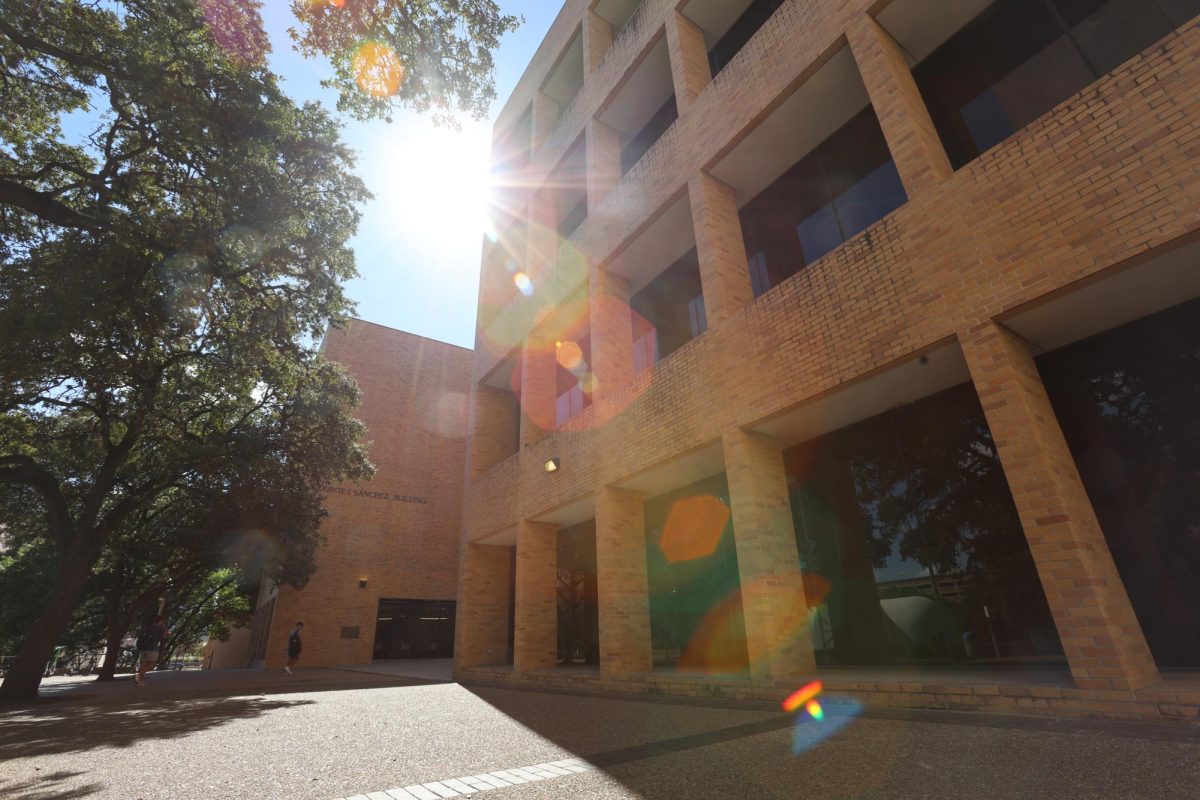From a test tube of algae, UT scientists and other engineers at the J.J. Pickle Research Campus have produced 2,200 gallons of algae in an effort to find an efficient alternative to fossil fuels.
“Through our method of letting single-celled algae reproduce by the double, we can grow it exponentially,” said Michael Jochum, chief scientist of AlgEternal Technologies. “This algae contains oils that can be extracted by the guys at UT and turned into either biodiesel, crude oil or even biomass — a substitute for coal.”
Jochum said that 12-foot-tall cylinders, or vertical growth modules, contain the algae organisms, water, nutrients and carbon dioxide, and allow the algae to grow at unlimited levels through the greenhouse growing structure and the intricate pipe system connecting them all together. The algae can also be grown in virtually any kind of water, even agricultural runoff, he said.
“We can also step in by taking carbon dioxide and turning it into fuel instead of wasting it into the environment or burying it,” Jochum said. “It’s cyclical, and it’d never run out.”
Jochum said his company was formed with the goal of using technology to efficiently get energy out of algae and found the right opportunity at UT when discovering the technique of oil extraction from oil used by engineers in the Center for Electromechanics at Pickle.
Electromechanics senior engineering scientist Mike Werst said the process of extracting oil from the algae depends on the division’s expertise with electricity.
“We often wonder what the heck we’re doing with biology right now, but apparently looking for high volts to let loose oils within algae cells,” Werst said. “And now we’re including all fields of scientists to work on this.”
Werst said within the next year, several units of this algae oil may be sold and scientists can begin experiments by using it as an energy source. They simply need to find a way to minimize the costs of capital and increase the volume of algae to make its oil more affordable.
“There’s been significant progress in commercializing it, but there’s room for improvement. We want to get a scale-up — a whole [power] plant,” Werst said. “We want to continue [research and development] and progress with new methods.”
Aside from the collaboration of engineers, Jerry Brand, director of the Culture Collection of Algae, is also collaborating on the project by providing algae cultures and researching the algae. The collection is supported by the National Science Foundation and the College of Natural Sciences.
“We’ve served as consultants to AlgEternal for the last two years,” Brand said. “We have decades of experience culturing and managing algae, and have one of the largest and most diverse collections of living algae in the world.”




















